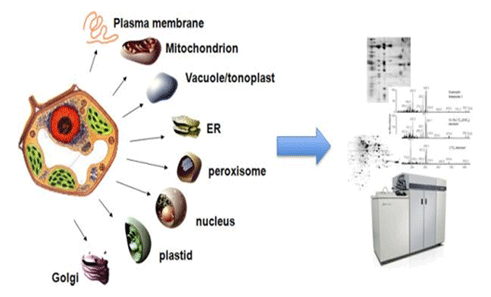Subcellular Proteomics
Subcellular Proteomics
Nuclear-encoded proteins distribution and compartments development inside cells enables specific cellular functions. The exploration of the proteome of the cell in terms of the collection of its subcompartments is therefore both a practical approach and a necessary function assay. It demonstrates that proper interpretation of proteomic data requires information about compartmentation of protein machinery.
Subcellular proteomics decreases the complexity of proteomie discovery. With the typical compartment representing 400-3000 proteins, gel and MS based technique assist to reach a high-level of analytical resolution. In contrast, whole cell proteomes of 12, 000-40, 000 proteins extend well beyond the ability of proteomic tools to resolve them, leaving the studies being “tip of the iceberg” activities. Subcellular proteomics stands on the shoulders of decades of biochemical research that has developed methods for isolation of subcellular compartments. Extensive laboratory work involving the tinkering with density, size, and charge separation techniques has enabled incremental limitation of contamination in isolation methods from a range of subcellular structures.
Based on the powerful combination of subcellular fractionation and protein identification by LC-MS/MS, it enables us to develop the subcellular proteomics approach for the characterization of subcellular compartments.



